One of my favorite artists is the paradoxical Giorgio Morandi. Born in Bologna, Italy in 1890 he became one of the 20th Century’s hardest artists to classify. He was exposed at different times to every arty “ism” to sweep Europe– including Impressionism, Cubism, Dadaism, Surrealism, Futurism, Italian Metaphysical-ism, and Minimalism. But he eventually zeroed in on his own peaceful, deceptively simple style of living and painting.
A Reclusive Life
He spent almost all his life in his native Bologna, where for decades, he shared a house with his three unmarried sisters, and worked in a small mountain studio in nearby Grizzana. He traveled little… only leaving Italy once to visit Switzerland. He also never visited Paris… an odd omission for an artist living in Europe through the beginning and middle of art’s seminal 20th Century.
Initially, he focused on architectural landscapes, under the influence of Cezanne. But in the 1940s, he migrated into his famous still-life (“Natura Morta”) engravings, drawings and paintings of everyday objects.
Over and over, the same vases, bottles, bowls, cups, saucers, jars, boxes, pitchers and pottery found their way onto his canvases. He sometimes spent weeks arranging them (and their lighting) like an architect moves buildings, rooms and even the sun itself around a project plan. And when Morandi finally found a satisfying arrangement, he often painted it as quickly as one might snap and frame a photograph.
With a Dusty Palette
His color palette also became subdued, pastel and even (one might say) “dusty.” In fact, most of the objects in his collection were dusty, and he wanted them to stay that way. (He once told a cleaning lady to “keep her hands off his stuff“!) And if he acquired a new object whose shape he liked but not its color, he’d slap some paint on it and let it gather dust… to better fit in with its new “friends.”
His works pair nicely with today’s interior-design principles. But during the days of Impressionism and gaudy Fauvism, the paintings were shockingly calm, quietly geometric, and veiled in contemplative mystery. Here are three examples that I photographed in 2019 at the Museo Morandi in Bologna’s MAMbo museum:
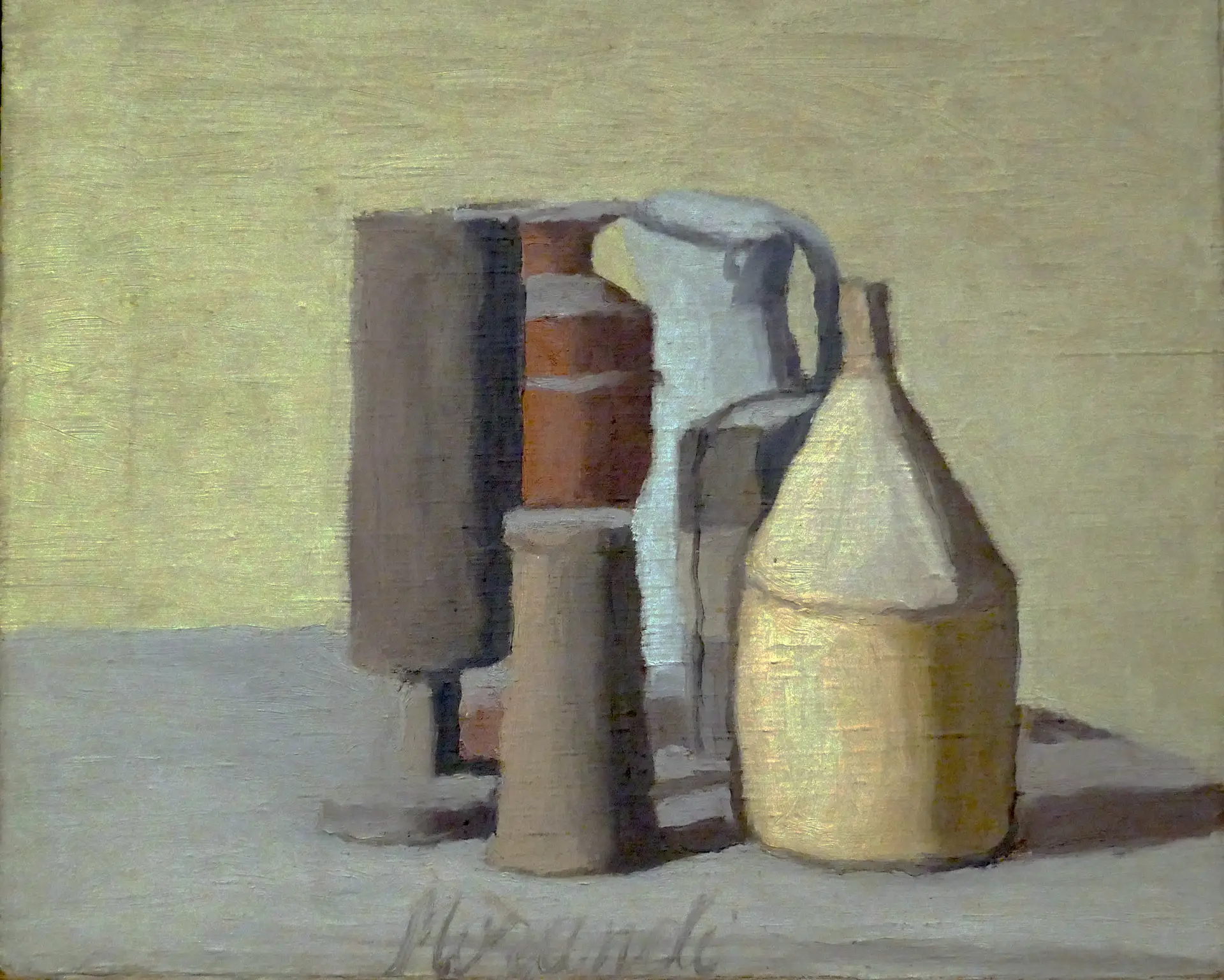
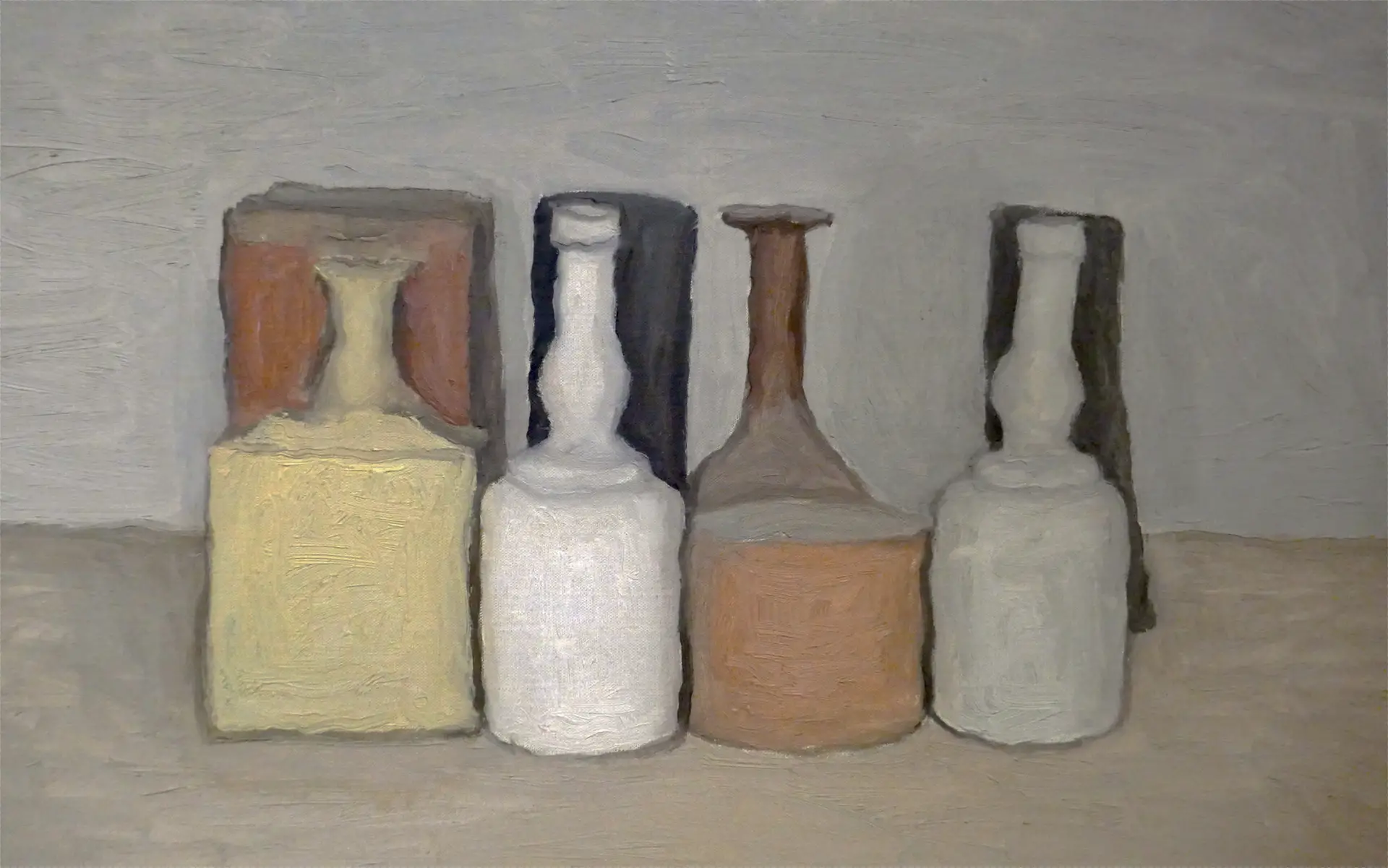
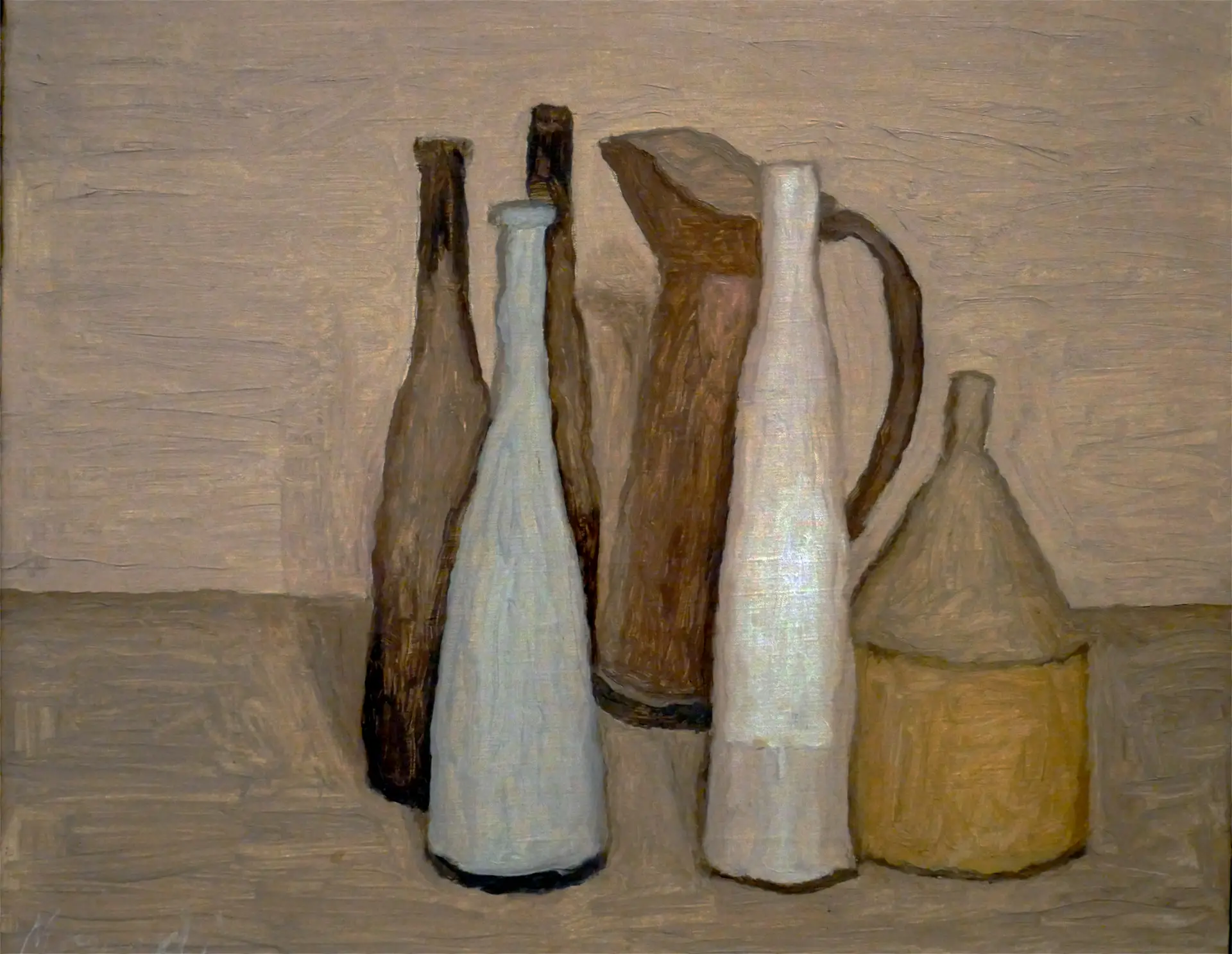
Note especially how quickly he brushed color to canvas in the above piece. Painting was often the least time-consuming part of his workflow.
And a Mysterious Appeal
I think these images appeal to peoples’ subconscious fascination with “assemblages”:
- Is that a cigar box, hiding between the white jug and yellow pottery at the right side of the first painting? And if so, is anything in it?
- What are those dark masses lurking behind the painted white bottles in the second?
- And are the tall skinny wine bottles in the third painting sentries, guarding the arrangement’s interior space for some unknown reason?
Such questions may seem silly, but they’re exactly how art critics have discussed Morandi’s works!
With Photographic Analogs
One photographic analog might be our fascination with landscape “paths to nowhere” that wend toward places we cannot see. Or our love of monochromatic images, which pare colorful reality down to textures, tonalities, shapes, light, shadows, and volumes seen and not.
Perhaps Morandi’s appeal also comes from his images’ architectural feel. Some could be interpreted as futuristic cityscapes. It has even been said that the architect Frank Gehry wouldn’t exist without Morandi. That’s debatable, but Gehry did once design a guest house in Wayzata, Minnesota inspired by Morandi’s work.
Whatever the cause, Morandi’s continuing popularity shows that he was onto something that remains hard to pin down. Something deeply meaningful.
Shooting my Own “Morandi’s”
The limitations imposed by such abstract ideas are compelling. So I became more than a little excited when I entered the museum’s room that housed this:
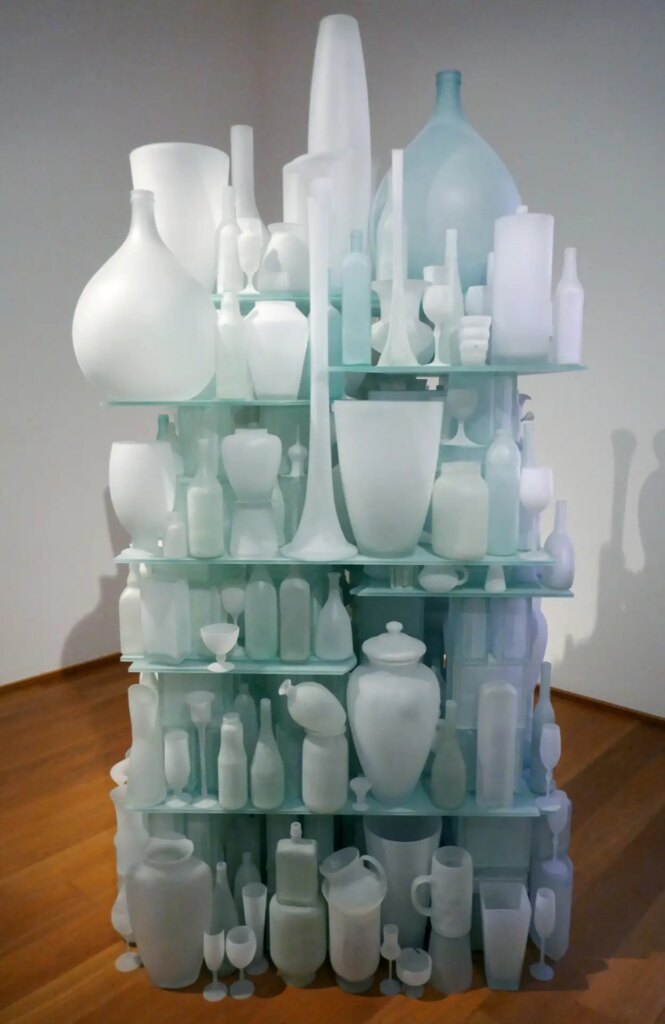
It is British sculptor Tony Cragg’s “Eroded landscape”— a 1999 homage to Morandi’s carefully “constructed” images. Built from hundreds of pieces of sand-blasted glass– cleverly balanced on glass shelves supported by more glass below– it was as mysterious and precariously ephemeral as Morandi’s entire ouvre.
I had to be reverently careful around its towering fragility… after a docent warned us that none of the glass pieces were glued down! And no protective ropes or barriers stood between that lovely pile and calamity. But it compelled me to come closer, frame interesting groupings, and photograph my own Morandi-esque still-lives. (I also prayed for no earthquakes while we were there!)
Soft Abstract Results
Here are six results:
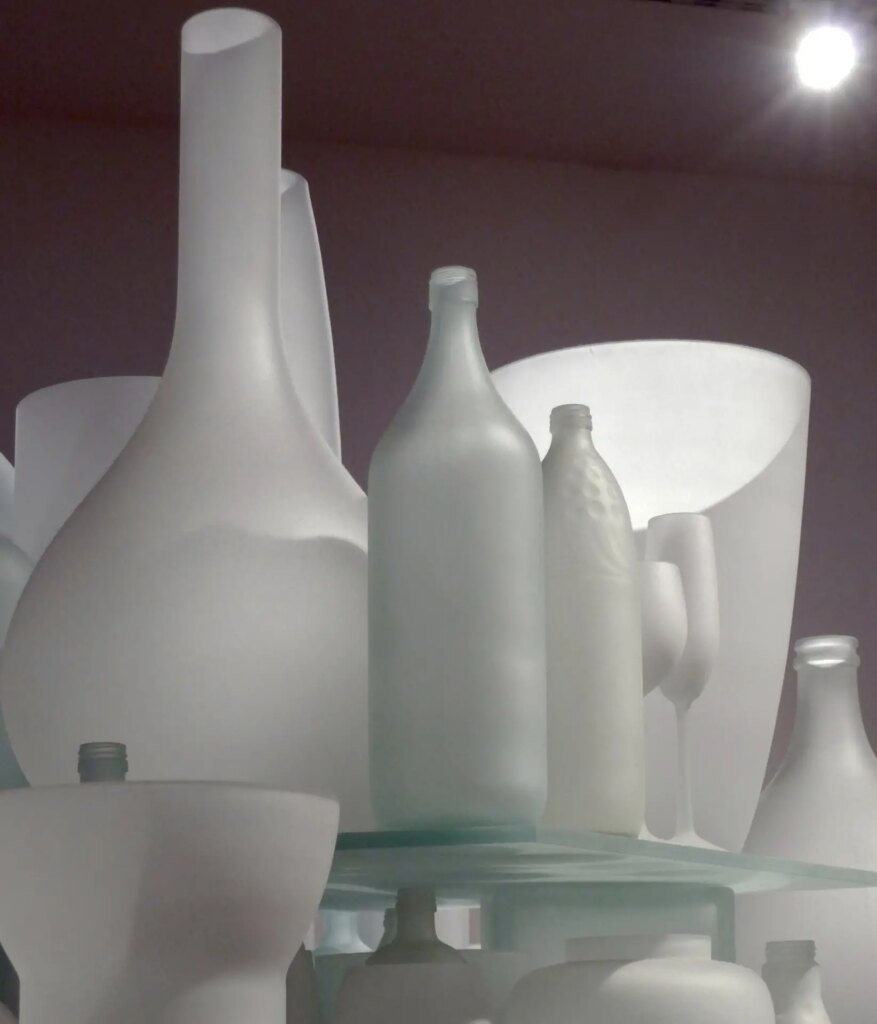
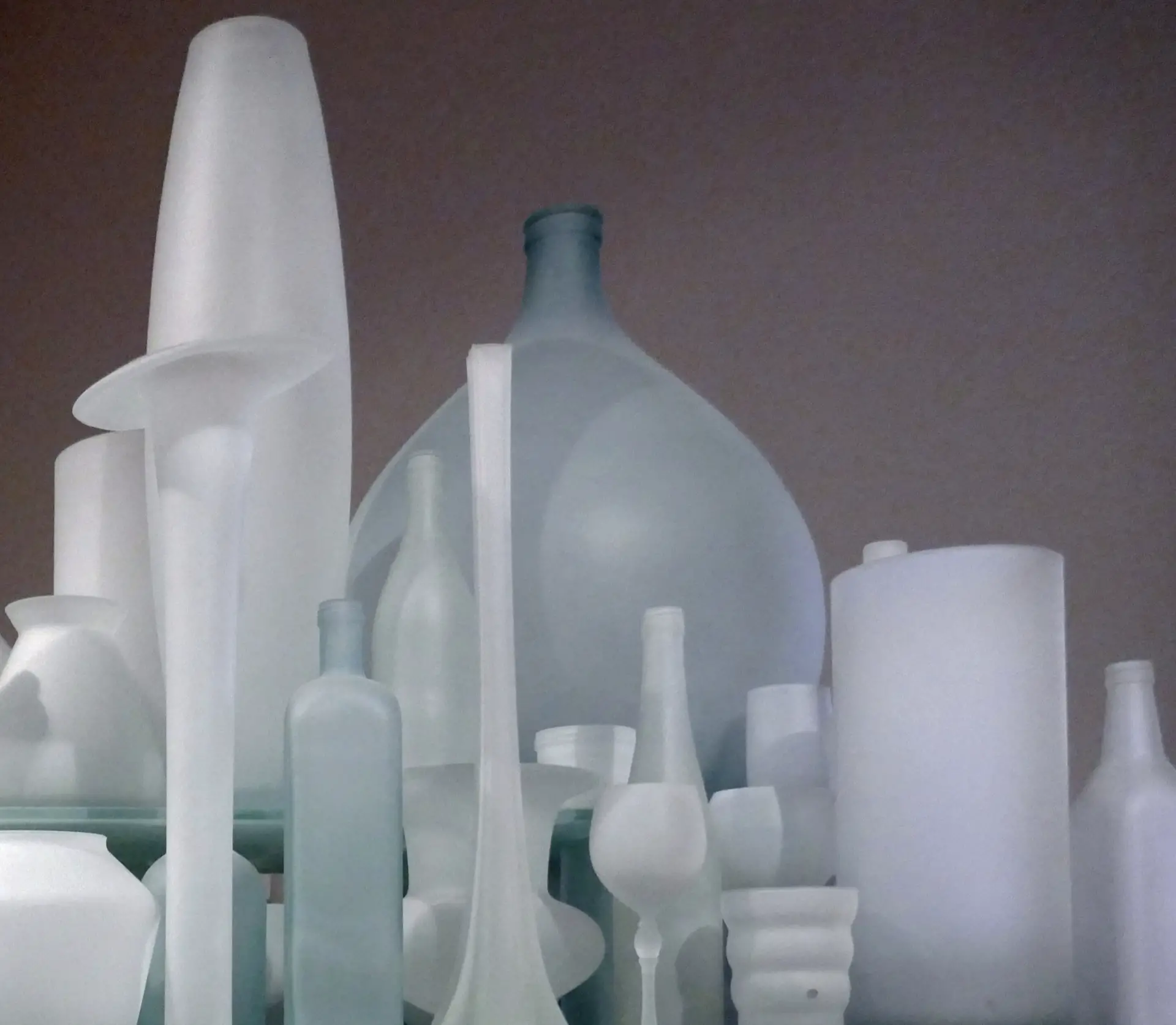
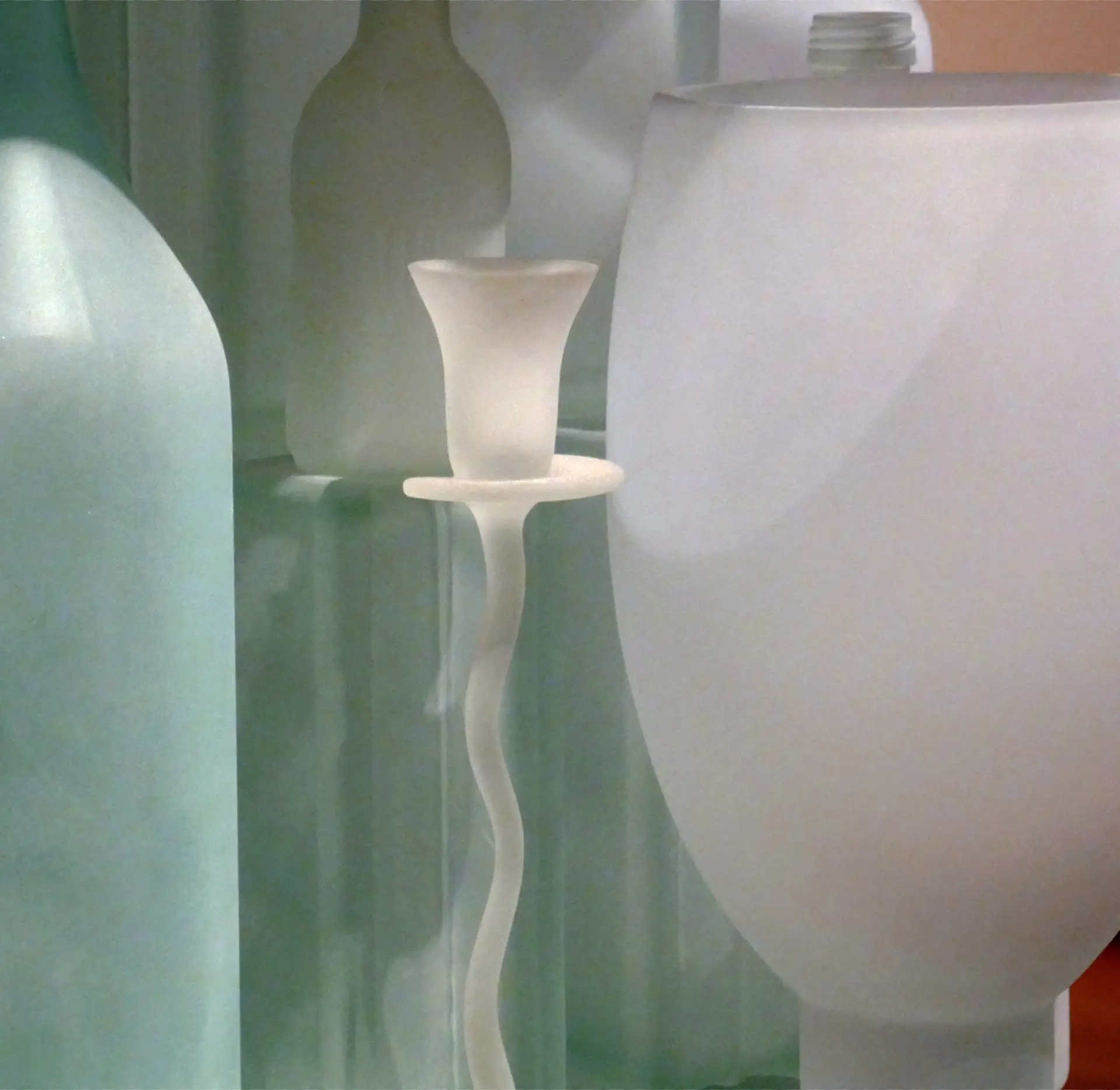
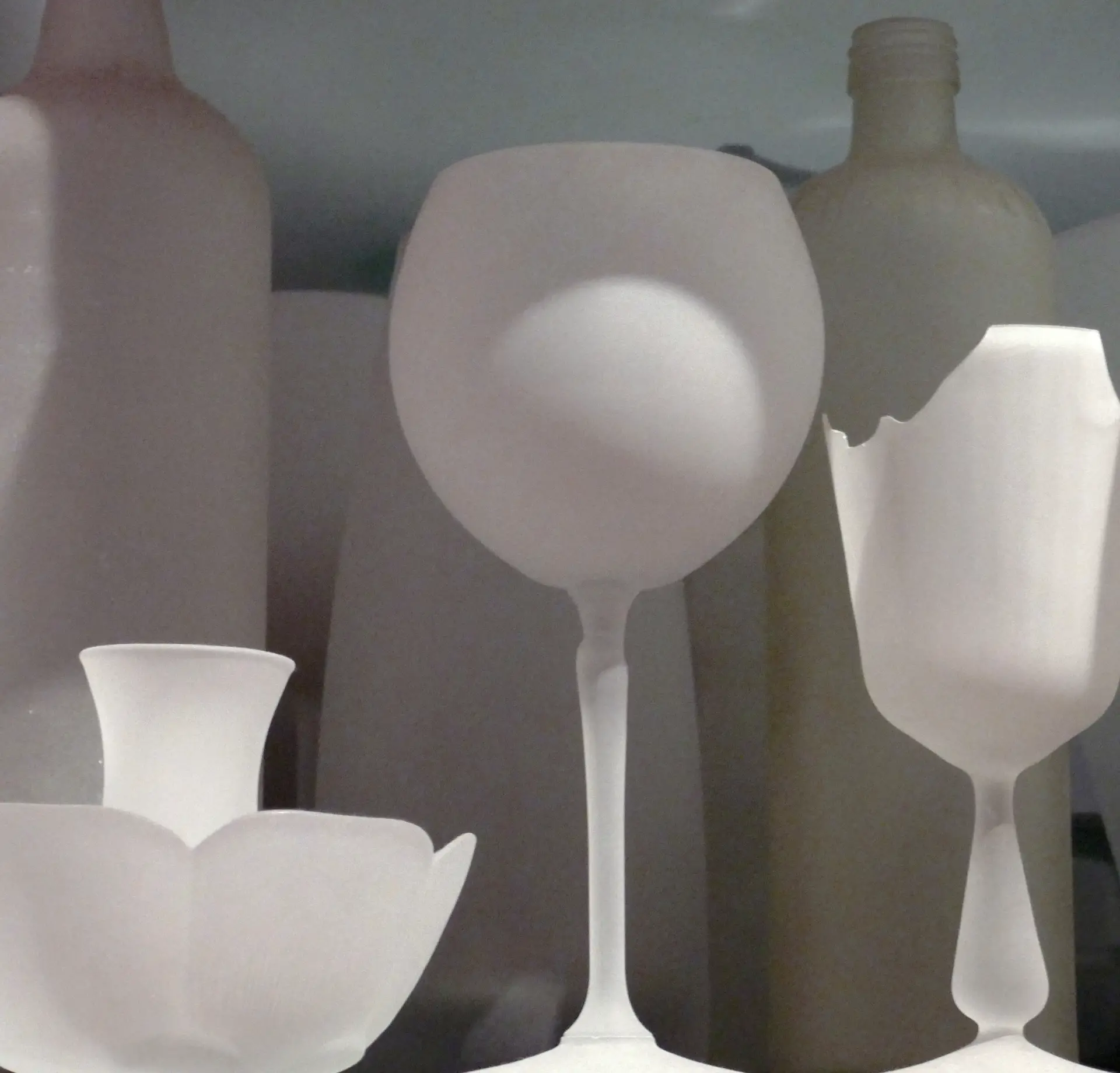
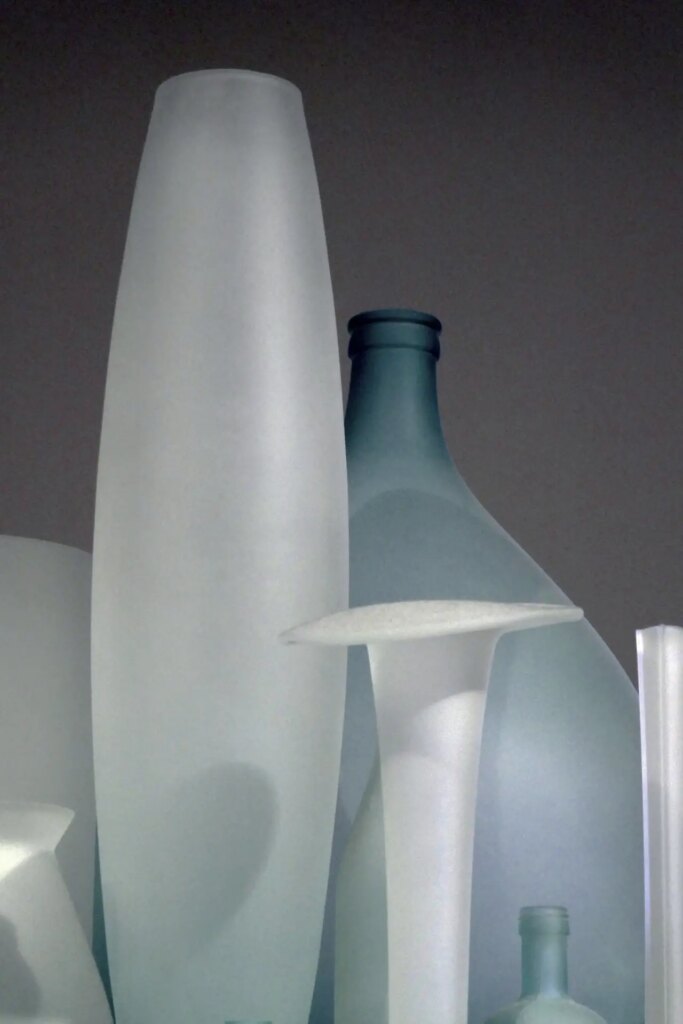
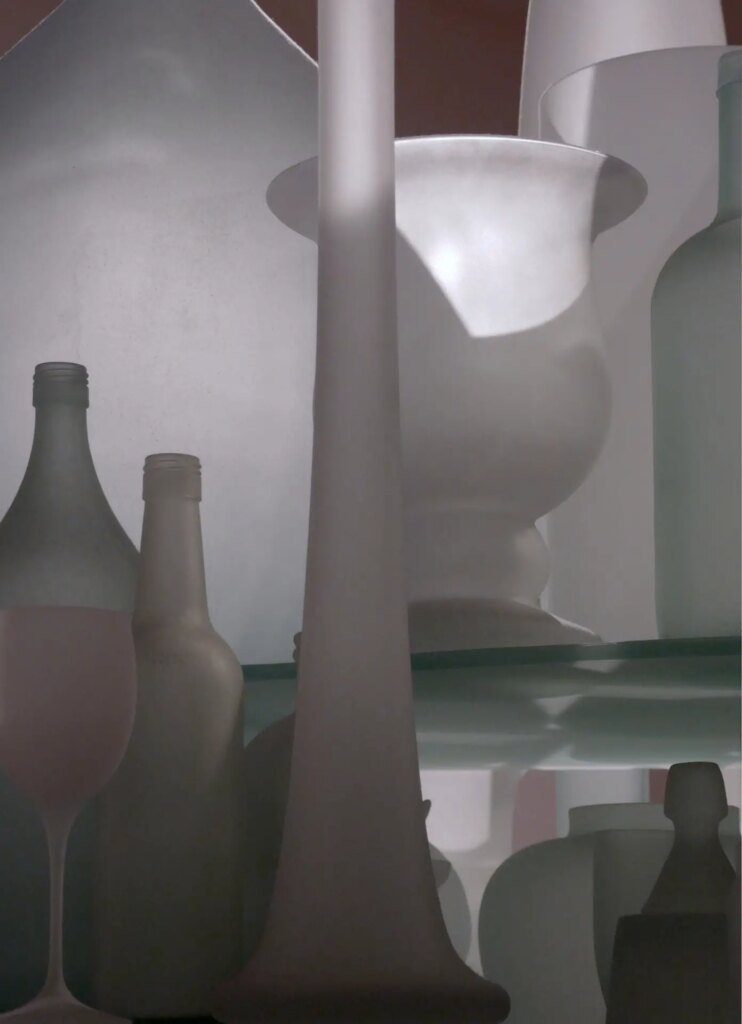
With Some Differences
You’ll notice several differences between Morandi’s work and my simulations:
- His groupings were almost always viewed from the front or slightly above. But due to the tower’s height, some of my photos were lookup shots.
- Unable to actually move items (!), I had to zoom (and crop) tightly to isolate small groupings.
- The sheer depth of the tower meant that all my images included many more planes of objects from front to back. For the same reason, lighting within my frames was also highly variable.
- And my Panasonic ZS100 point-and-shoot’s Leica lens was way too sharp for the job. (My old iPhone 6 might have been better.) To get the soft, pastel, “dusty” look I wanted, I had to erode my photos’ contrast and saturation quite a bit in post.
Epilogue
If you’d like to try your hand at this, you needn’t go to Bologna! A quick internet search showed that museums across the globe own Cragg variations on this Morandi theme. Some even look like the tower was bumped and sent crashing. But they were built that way.
-Dave Powell is a Westford, Mass., writer and avid amateur photographer.
Share this post:
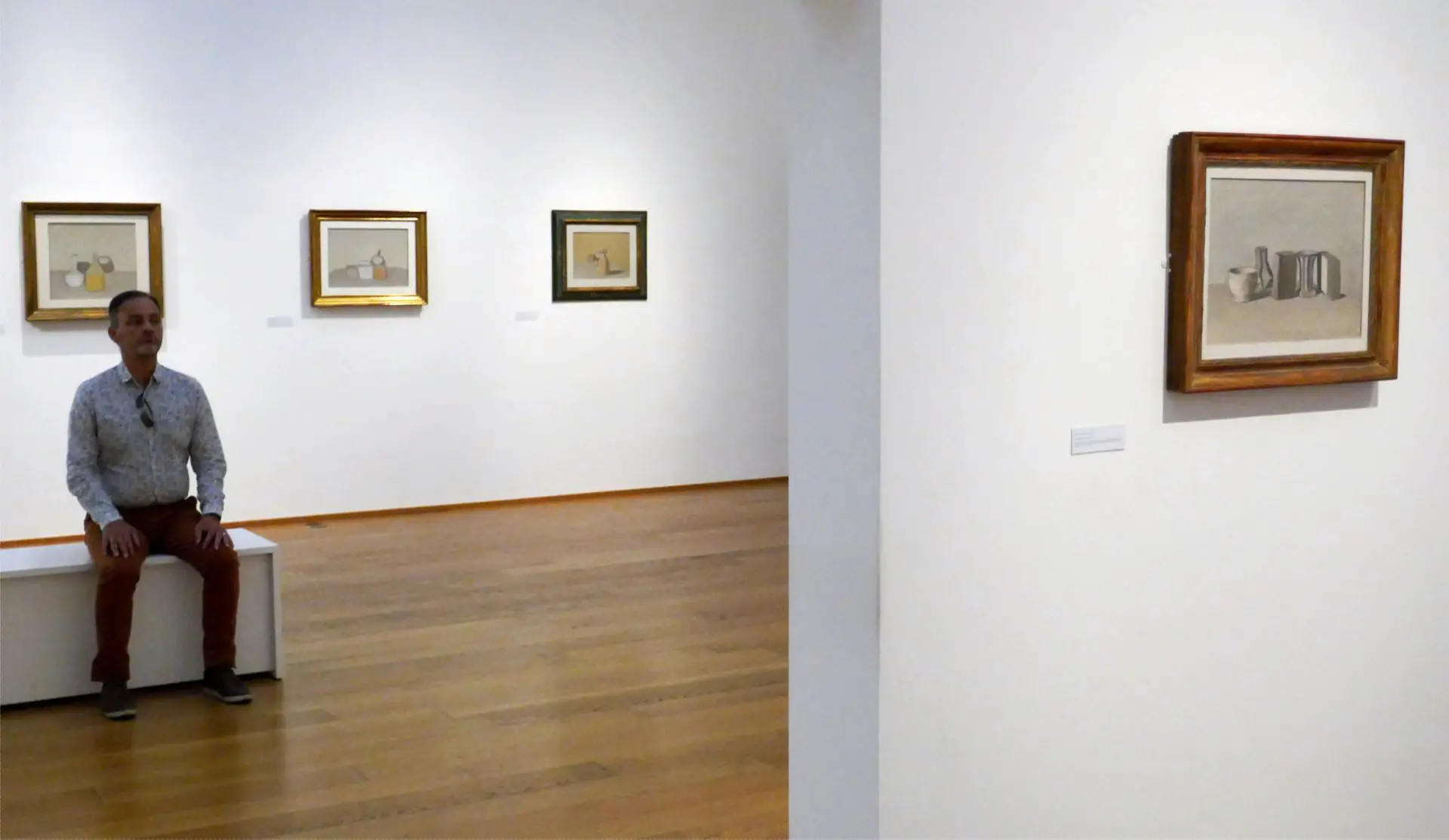








Comments
Arthur on Making “Morandi’s”
Comment posted: 20/07/2023
Comment posted: 20/07/2023
Comment posted: 20/07/2023
Comment posted: 20/07/2023
Brian Nicholls on Making “Morandi’s”
Comment posted: 21/07/2023
Comment posted: 21/07/2023
Peggy on Making “Morandi’s”
Comment posted: 22/07/2023
Comment posted: 22/07/2023